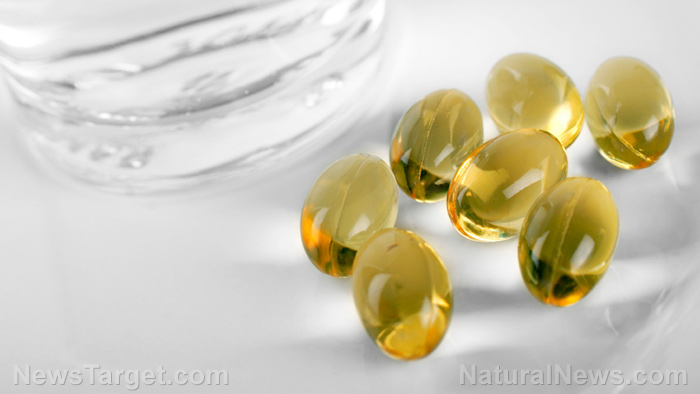8 Lifestyle strategies to shield eyes from age-related decline
08/16/2025 / By Willow Tohi

- Regular comprehensive eye exams detect diseases like glaucoma early.
- Mediterranean-style meals with antioxidants lower cataract risk.
- Sunglasses and screen filters block harmful rays, reducing strain.
- Lutein, omega-3s, and AREDS formulations bolster eye health.
- Exercise and sleep improve circulation, safeguarding against conditions like glaucoma.
As the world’s population ages and screen time surges, preventable eye diseases—like cataracts, glaucoma, and diabetic retinopathy—are on the rise. By 2040, glaucoma alone could affect 110 million people, while macular degeneration threatens 300 million. Dr. Marina Gurvich, an integrative optometrist, emphasizes that vision preservation now requires more than glasses: “The eyes are a window to overall health. Protecting them means addressing holistic factors like diet, exercise, and chronic disease management.” This article outlines actionable steps to reduce risk and maintain vision over decades.
Early detection—the bedrock of eye health
Regular eye exams are the first line of defense. The American Optometric Association advises annual screenings starting in childhood, as conditions like myopia now affect nearly 1 in 3 U.S. children by age 12. “Early detection matters most for silent diseases like glaucoma,” warns Dr. Gurvich. Unlike cataracts, glaucoma lacks early symptoms, gradually damaging the optic nerve. For those with a family history, exams may need to occur as often as every six months. A 2023 study in JAMA Ophthalmology confirmed biannual exams halve vision loss risk in high-risk groups.
The science of nutrition—fueling retinal health
A diet rich in leafy greens (kale, spinach), fatty fish (salmon), and nuts delivers key antioxidants like lutein and omega-3s, which nourish retinal cells. Dr. Gurvich’s Mediterranean diet approach prioritizes these ingredients, citing studies where participants cutting trans fats and increasing olive oil saw 40% reduced macular degeneration risk. Supplements, such as AREDS II vitamin formulas approved by the National Eye Institute, add targeted support. “Vitamin deficiencies, like low zinc intake, directly impact eye proteins,” she notes. Historically, ship captains avoided vitamin C shortages to prevent cataracts—a lesson modern dieters still heed.
Limiting environmental “daily assaults”
Modern life bombards eyes with UV rays, air pollution, and blue light from screens. Dr. Gurvich underscores sunglasses as “armor,” recommending those blocking 99–100% UVA/UVB. “Even 15 minutes of midday sun without protection can damage cells,” she warns. Blue-light filters on devices or glasses are increasingly popular for digital workers; her patients report 60% less eye strain using them. Skincare habits also matter: eyelid hygiene and avoiding PFAS-laden cosmetics reduce dry eye risks—a condition affecting 350 million globally.
Exercise, sleep and chronic care
Exercise isn’t just for the body; it’s for the eyes. A Harvard study found moderate activity (brisk walking, yoga) lowers glaucoma risk by 25% by improving ocular blood flow. Sleep’s role is equally critical: inadequate rest disrupts tear production and retinal repair. Dr. Gurvich cites studies showing insomnia doubles dry eye likelihood. Managing conditions like diabetes—a leading cause of blindness—demands vigilance: “High blood sugar damages retinal blood vessels irreversibly. Control it before complications arise.”
Genetics and behavior—the choices you can’t (and can) control
While family history can predispose individuals to glaucoma or macular degeneration, lifestyle decisively shapes outcomes. “Eighty percent of age-related eye disease stems from modifiable factors,” states a 2022 NIH report. Smoking, linked to a threefold macular degeneration risk increase, exemplifies such choices. Quitting—aided by resources like 1-800-QUIT-NOW—can reinstatement beneficial effects within years.
A holistic vision for the future—why prevention works
Centuries of medical wisdom—from Hippocrates’ “gut as the root of health” to modern microbiome research—prove that eye health depends on total well-being. “The eyes are no lone organ; they’re connected to every system in your body,” concludes Dr. Gurvich. As populations age and screen diets dominate, her checklist—regular exams, nutrient-dense eats, and sun protection—provides a blueprint for sustaining vision through proactive care. In an era where 70% of sight loss is avoidable, these strategies are not optional but essential to seeing tomorrow clearly today.
Sources for this article include:
Submit a correction >>
Tagged Under:
blood sugar, blue light, Cures, eye health, fitness, healing, longevity, natural health, natural remedies, nutrients, prevention, remedies, supplements
This article may contain statements that reflect the opinion of the author





















